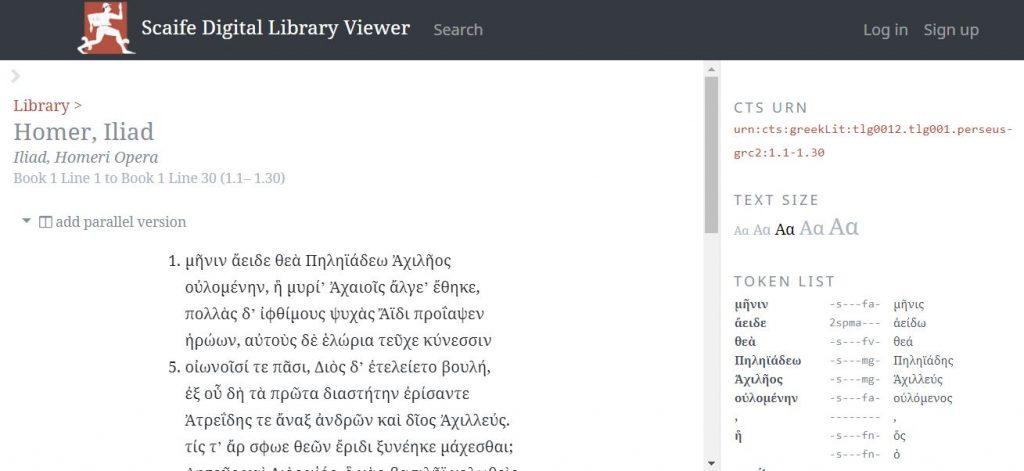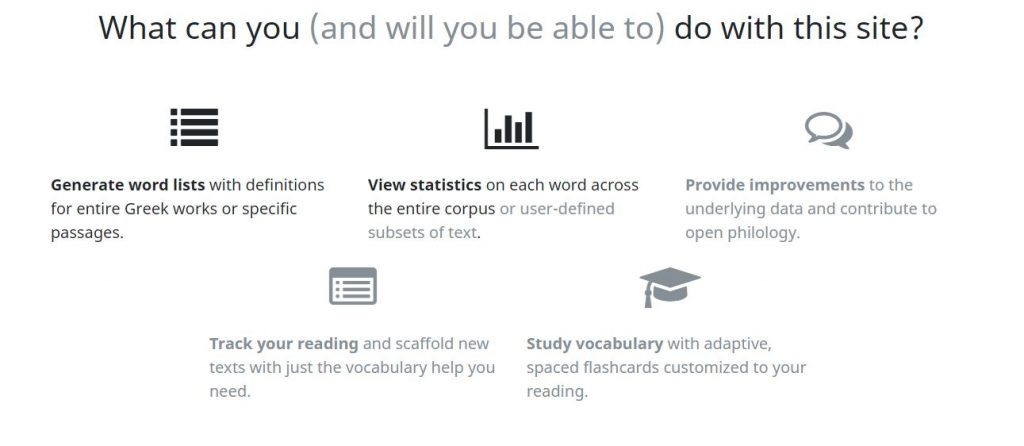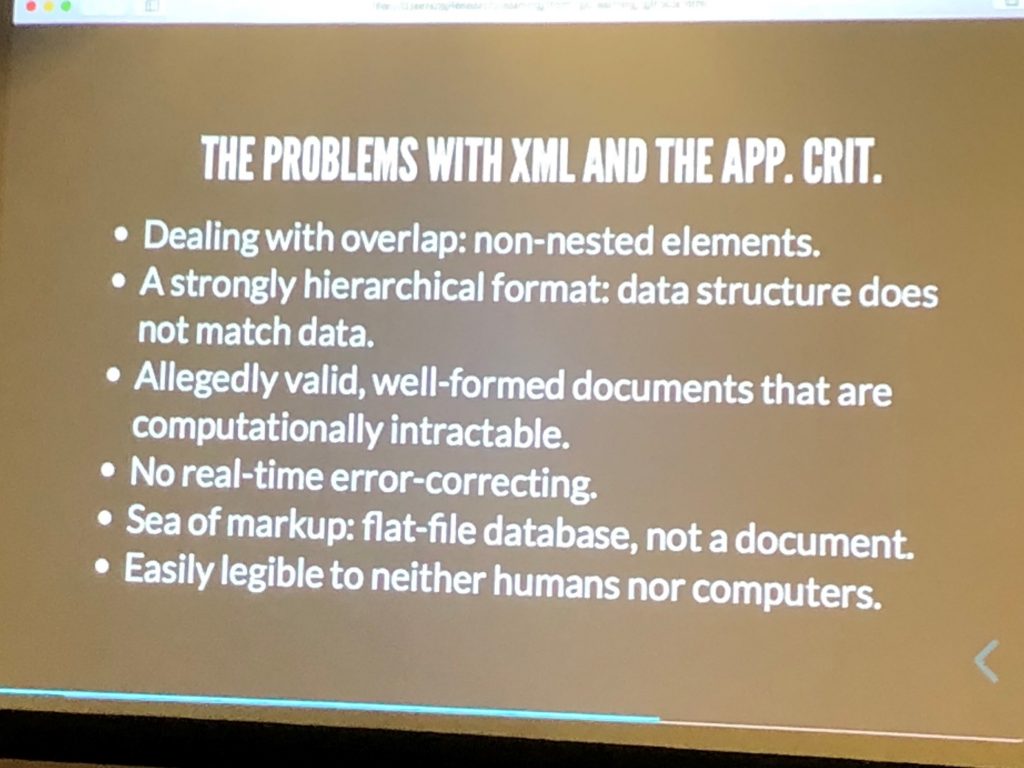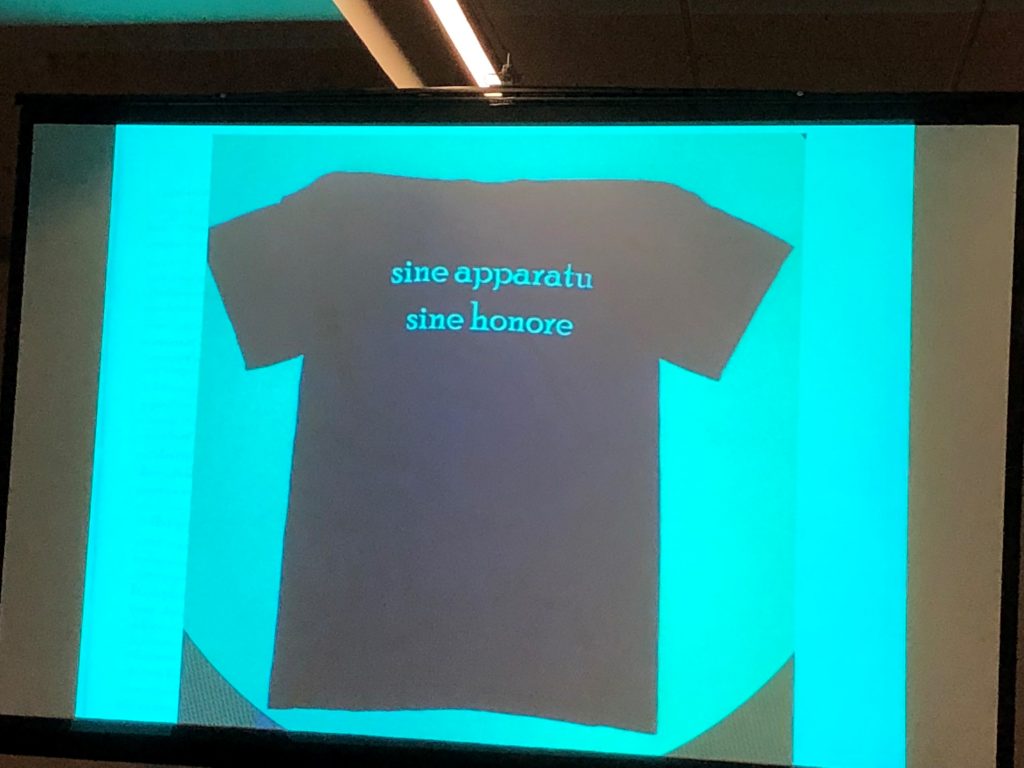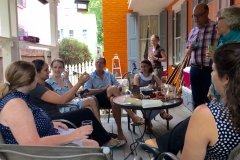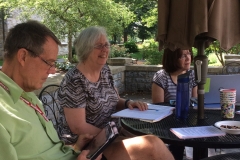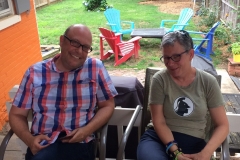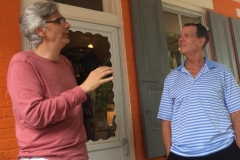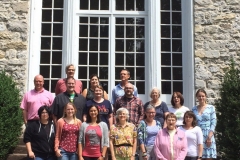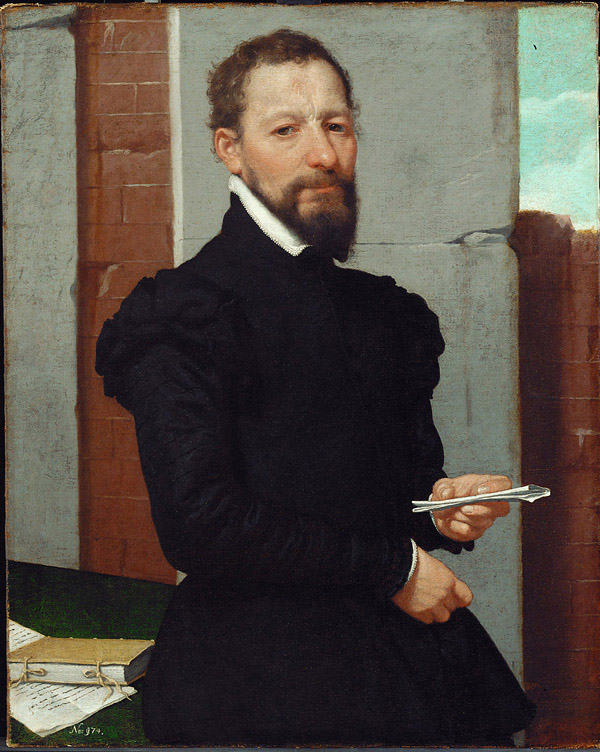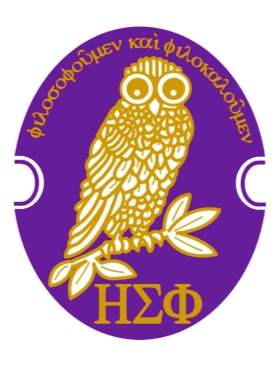
ΗΣΦ is the college honorary society for classical studies, and Dickinson is proud to be hosting their 90th annual this weekend. Here is the schedule!
Friday, March 23rd
5:00-7:00pm, Great Room, Allison Hall
Registration and Reception
Light refreshments will be provided before the formal program begins
7:00-9:00pm, Great Room, Allison Hall
Opening Remarks and Certamen
Saturday, March 24th
7:00-8:30am, Comfort Suites
Continental Breakfast
9:00-11:00am, Great Room, Allison Hall
First Business Meeting
Megas Prytanis Christopher Maze, presiding
Minutes of the 89th Annual Convention
Megale Grammateus Katlyn Yost
Reports
- Chapter Reports
- Report of Contests
- Report of Scholarships
- Report of Megas Chrysophylax
- Report of Megale Hyparchos
- Old Business
- New Business
- Bids to host the 92nd Annual Convention (2020)
- Nominations for 2018-2019 National Officers
11:00-11:15am: Break
11:15am-12:30pm, Allison Hall Great Room
Presentation of Student Papers
John James, Eta Delta at Hillsdale College, “Emotional Evocation and the Psychology of Sign: Gorgias’ Response to Questions of Communication in Helen”
Sophia Decker, Tau at the University of Kentucky, “Dorians are Allowed to Speak Doric: Theocritus’ Idyll XV in the Context of Panhellenization”
Aaron Romanowski, Beta Psi at Rhodes College, ” The Use of the Cult of the Saints in the Milan Basilica Crisis of 385 CE ”
Katie Hillery, Eta Delta at Hillsdale College , “Developing an Eschatological Narrative: An Interpretation of Via Latina’s ‘Hercules Cycle’ through the Eyes of the Late Antique Roman Viewer”
12:30-1:30pm
Lunch, Dickinson College Cafeteria- Holland Union Building
Break-out Sessions (1:00-3:15)
1-2:30 pm, East College 111 (Classics Library)
Latin Declamation Contest
Session One
1:30-2:15pm, Ceramics Studio (Limit 20 Students)
Vase Painting
Rachel Eng, Assistant Professor of Art and Archaeology
In this workshop students will learn the different processes used in black and red figure pottery. We will look at examples of imagery from each style and learn how to apply the same techniques to clay forms.
1:30-2:15pm, Mumper Stuart Education Center, Weiss Basement
Classical Treasures at the Trout Gallery
From a chunk of the Parthenon to a denarius of Septimius Severus, The Trout Gallery has a treasure trove of classical objects. In this interactive program, learn about our well-documented pieces, and contribute to scholarship on some of our little-researched gems.
1:30-2:15pm, Allison Hall Community Room (basement)
Caesar and the Battle of Alesia, Diorama and Lecture
General John Bonin, Professor of Concepts and Doctrine,
US Army War College,
A history of the battle and its significance. Prof. Bonin will also construct a diorama, populated by his own hand-painted figurines, to illustrate the battle itself.
1:30-2:15pm, On-Campus Dig Site
Michael Sinclair, Keck Archaeology Lab
A demonstration of Dickinson’s Dig Simulator.
Session Two
2:30-3:15pm, Mumper Stuart Education Center, Weiss Basement
Classical Treasures at the Trout Gallery
From a chunk of the Parthenon to a denarius of Septimius Severus, The Trout Gallery has a treasure trove of classical objects. In this interactive program, learn about our well-documented pieces, and contribute to scholarship on some of our little-researched gems.
2:30-3:15pm, Allison Hall Community Room (basement)
Caesar and the Battle of Alesia, Diorama and Lecture
General John Bonin, Professor of Concepts and Doctrine,
US Army War College, will speak about the battle and its historical significance. He will also construct a diorama, populated by his own hand-painted figurines, to illustrate the battle itself.
2:30-3:15PM, Denny 112
Digital Maker Space
Prof. Francese, Senior Editor and Project Director of Dickinson Classical Commentaries, provides an introduction to digitial humanities at Dickinson. Dickinson students Ian White, Beth Eidam, Connor Ford, and Claire Jeantheau present their projects.
3:30-4:30pm, Allison Hall and East College
Committee Meetings
- New Chapters (Denny 112)
- Finance (Allison Hall Great Room)
- Contest and Scholarships (East College 107)
- Convention (East College 300)
- Resolutions (East College 301)
- Officers (East College 102)
5:30pm, Charles M. Kanev Planetarium
Mythology and the Stars
6:00pm, Charles M. Kanev Planetarium
Mythology and the Stars
7:00-9:00pm, Holland Union Building, Social Hall
Banquet
Awards Ceremony
Vir et femina vestiti optime
Certamen Award
Paper Award
Service Award
Latin Declamation Contest Winner
Lifetime Achievement Awards:
Hans-Friedrich Mueller
Judith P. Hallett
Sunday, March 25th
8:00-8:45am, Comfort Suites
Continental Breakfast
9:00am-12:00pm, Great Room, Allison Hall
Second Business Meeting,
Megas Prytanis Christopher Maze, presiding
- Contest for Chapter Regalia
- Committee Reports
- Report of the Executive Secretary
- Report of the Chair of the Board of Trustees
- Election of 2020 Convention Site
- Resolutions and Amendments
- Election of 2018-19 National Officers
- Installation of Officers
Closing Remarks
 I am teaching the film Agora (2009) for the second time this year in my class Ancient Worlds on Film. Despite some considerable hunting I have not been able to find a convenient collection of the ancient sources on the fascinating philosopher and mathematician Hypatia of Alexandria, the subject of the film. Since comparison of film and ancient sources is at the heart of the course I was constrained to make my own collection, which I offer here for the benefit of anybody else interested in the film. In include Rufinus’ account of the storming of the temple of Serapis, which figures prominently in the film. I also put in accounts of Hypatia from both Christian (John of Nikiu, Socrates) and pagan or Neo-Platonist (Palladas, Damascius, the Suda) perspectives. The main gap is the letters of Synesius, which I did not include. For more on Hypatia and the film, I recommend the following:
I am teaching the film Agora (2009) for the second time this year in my class Ancient Worlds on Film. Despite some considerable hunting I have not been able to find a convenient collection of the ancient sources on the fascinating philosopher and mathematician Hypatia of Alexandria, the subject of the film. Since comparison of film and ancient sources is at the heart of the course I was constrained to make my own collection, which I offer here for the benefit of anybody else interested in the film. In include Rufinus’ account of the storming of the temple of Serapis, which figures prominently in the film. I also put in accounts of Hypatia from both Christian (John of Nikiu, Socrates) and pagan or Neo-Platonist (Palladas, Damascius, the Suda) perspectives. The main gap is the letters of Synesius, which I did not include. For more on Hypatia and the film, I recommend the following:
